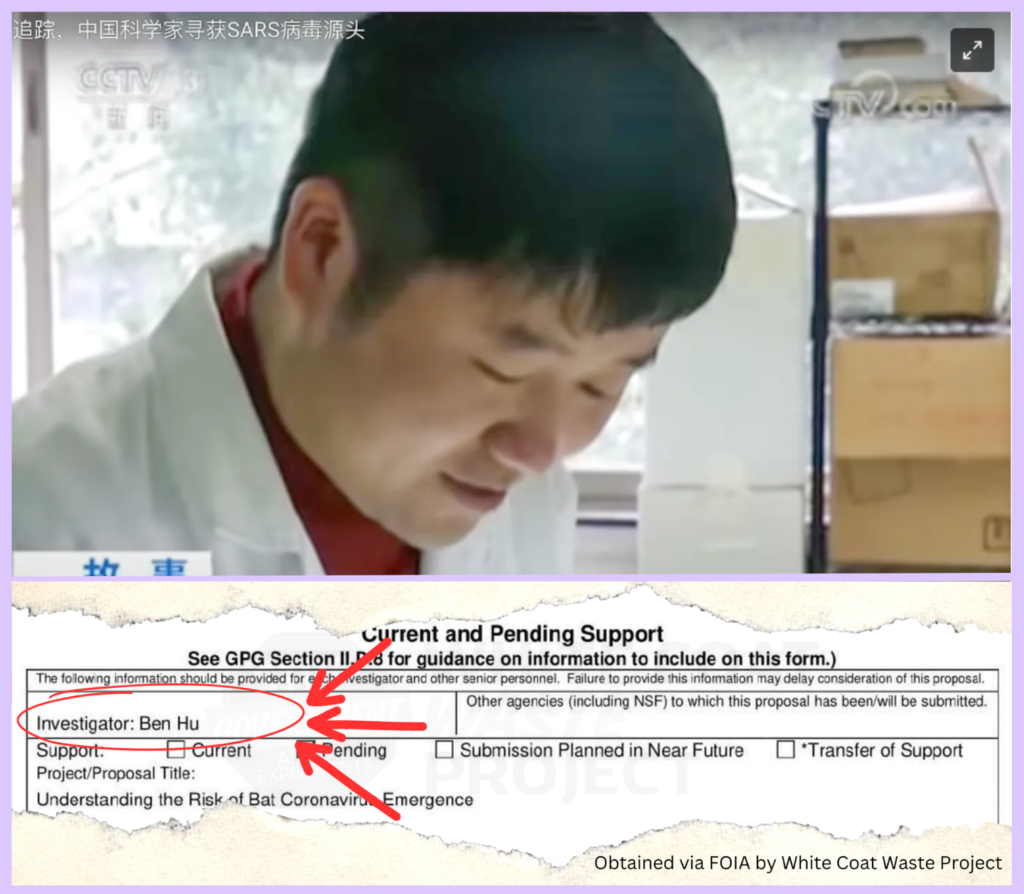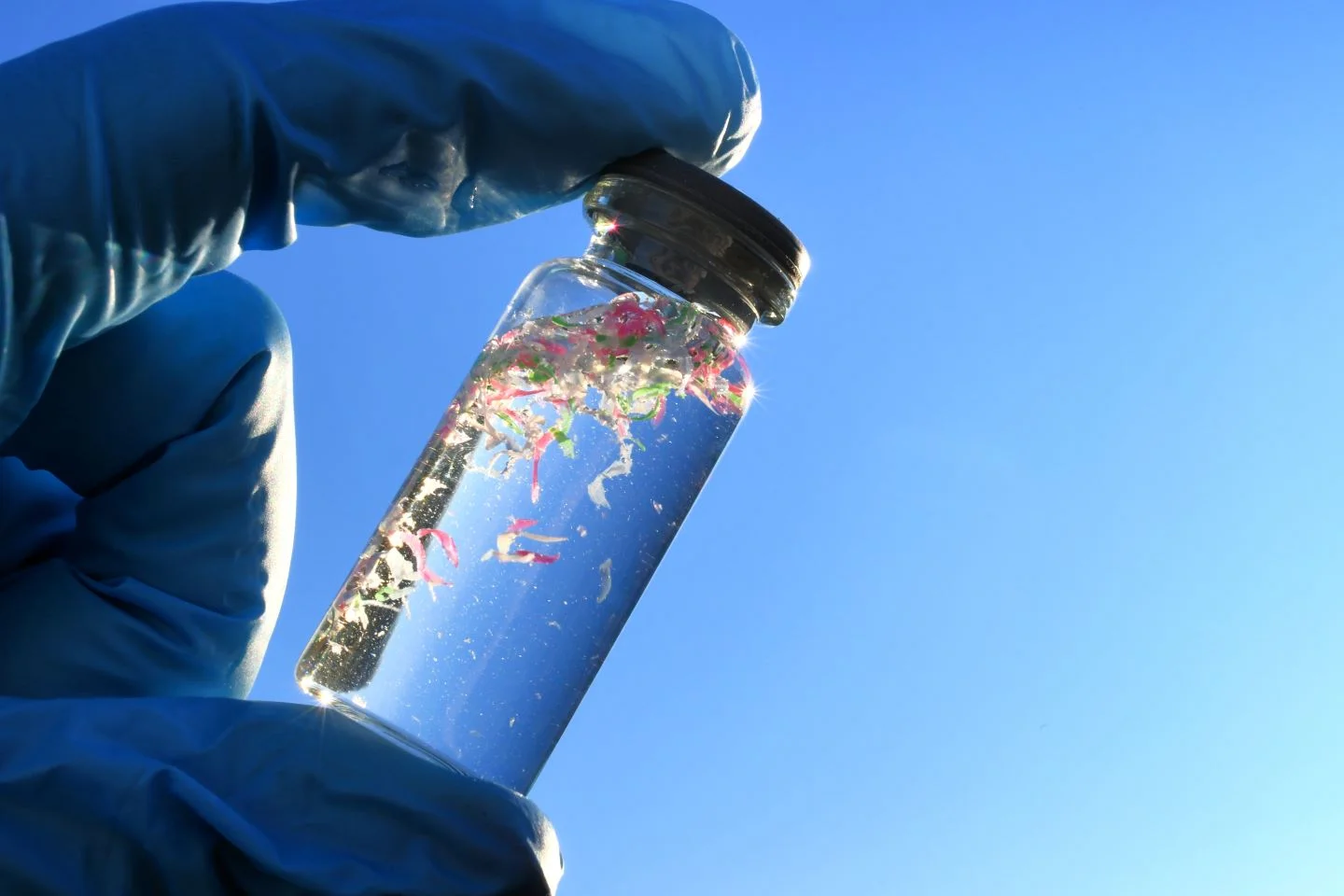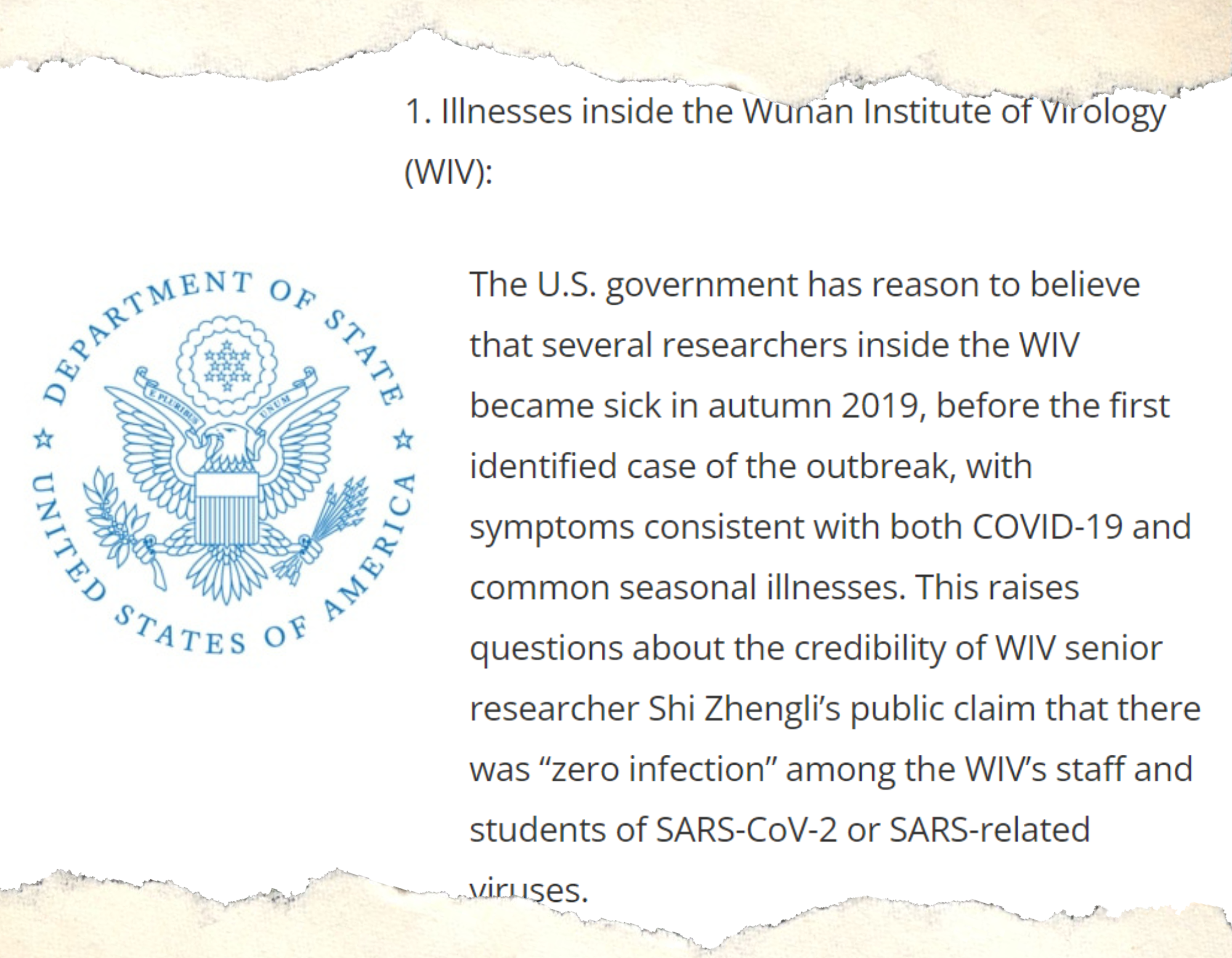A devastating fire at Club Pulse in Kocani has claimed at least 53 lives and left over 100 injured after igniting around 3 a.m. local time. The flames quickly engulfed the...
Read moreSafety & Security
Microplastics are infiltrating the human body at an alarming rate, and new research suggests that our brains may be absorbing more of these tiny particles than any other organ. Recent studies...
Read moreMicroplastics are infiltrating the human body at an alarming rate, and new research suggests that our brains may be absorbing more of these tiny particles than any other organ. Recent studies have detected microplastics in human brain tissue at significantly higher concentrations than in other parts of the body, raising concerns about potential long-term health effects.
Microplastics in the Brain: A Growing Concern
Microplastics, which are plastic particles smaller than 5 millimeters, are now found in the air we breathe, the food we eat, and even the water we drink. However, the plastic accumulating in the brain appears to be even smaller than previously thought, with some particles measuring only two to three times the size of a virus. This raises concerns about their ability to bypass the body’s natural defense mechanisms.
One of the most alarming discoveries is that microplastics can cross the blood-brain barrier, a protective filter that usually prevents harmful substances from reaching brain tissue. The implications of this are still being studied, but early findings suggest that these particles could contribute to inflammation, oxidative stress, and even neurological disorders.
Link to Dementia and Cognitive Decline
Emerging research has found that individuals diagnosed with dementia had up to 10 times as much plastic in their brains as those without the condition. While this does not yet establish a direct cause-and-effect relationship, it raises urgent questions about the potential impact of microplastics on cognitive function and neurodegenerative diseases.
Scientists are investigating whether prolonged exposure to microplastics could lead to changes in brain chemistry, potentially accelerating age-related cognitive decline. Animal studies have already shown that microplastic exposure can lead to behavioral changes, memory impairment, and brain inflammation, but further research is needed to confirm these effects in humans.

How Are Microplastics Entering the Brain?
Microplastics enter the human body through multiple pathways:
- Inhalation: Airborne microplastics from synthetic textiles, car tires, and industrial pollution can be inhaled and enter the bloodstream.
- Ingestion: Plastic contamination in food, water, and packaging leads to direct consumption.
- Absorption Through the Skin: Some studies suggest that microplastics may even be absorbed through the skin, though more research is required.
Once inside the body, the tiniest microplastics can circulate in the bloodstream and penetrate critical organs, including the brain. Their long-term accumulation raises concerns about potential toxicity and the body’s ability to process or remove them.
Potential Health Risks and Unknowns
The full impact of microplastics on human health remains unclear, but their presence in the brain suggests a need for further study. Some potential risks include:
- Neuroinflammation: Tiny plastic particles may trigger an immune response, leading to chronic inflammation in the brain.
- Oxidative Stress: Microplastics may contribute to cellular damage by increasing oxidative stress, a factor linked to neurodegenerative diseases.
- Toxin Carriers: Microplastics can absorb harmful chemicals from the environment, potentially delivering toxic compounds directly to the brain.
Reducing Microplastic Exposure
While it may be impossible to eliminate microplastic exposure entirely, there are steps individuals can take to reduce their intake:
- Filter Drinking Water: Use high-quality water filters to remove microplastics from tap water.
- Avoid Plastic Packaging: Opt for glass, metal, or other sustainable packaging options when possible.
- Wear Natural Fabrics: Choose clothing made from natural fibers like cotton or wool instead of synthetic materials that shed microplastics.
- Improve Indoor Air Quality: Use air purifiers and vacuum regularly with HEPA filters to reduce airborne microplastics.
The Need for Urgent Research and Regulation
The discovery of microplastics in human brains underscores the urgent need for further research and stronger regulations on plastic production and waste management. Policymakers, scientists, and the public must work together to address the growing issue of microplastic pollution before it becomes a larger public health crisis.
As we continue to uncover the extent of microplastic contamination in our bodies, one thing is clear: the plastic problem is no longer just an environmental issue—it’s a human health issue. Understanding and mitigating the risks of microplastic exposure could be critical to protecting future generations from potential neurological harm.
- [posts_like_dislike id=350]
Tags:Covid19United States
New Findings Strengthen the Lab-Leak Hypothesis A recent investigation by the White Coat Waste Project (WCW) has uncovered new evidence linking U.S. government funding to Ben Hu, the Wuhan Institute of...
Read moreNew Findings Strengthen the Lab-Leak Hypothesis
A recent investigation by the White Coat Waste Project (WCW) has uncovered new evidence linking U.S. government funding to Ben Hu, the Wuhan Institute of Virology (WIV) researcher now identified as “Patient Zero”—the first known person to fall ill with COVID-19.
Newly-leaked U.S. intelligence, combined with a Freedom of Information Act (FOIA) investigation led by WCW, suggests that Hu and his colleagues at the Wuhan Lab were working on dangerous gain-of-function research on coronaviruses—experiments that were partially funded by American taxpayers through grants from the National Institutes of Allergy and Infectious Diseases (NIAID) and the United States Agency for International Development (USAID).

Connecting the Dots: U.S. Tax Dollars and Wuhan’s Risky Research
Since 2019, WCW has followed the money trail leading to China’s Wuhan Lab, exposing how U.S. taxpayer funds were funneled into reckless animal experiments. In 2021, a FOIA lawsuit filed by WCW revealed official receipts proving that the U.S. government was funding Ben Hu’s gain-of-function research on bat coronaviruses.
Now, a newly-leaked U.S. intelligence report identifies Hu as the first known individual to contract COVID-19 at the Wuhan Lab—further solidifying the lab-leak theory.
What Do the Documents Reveal?
- Ben Hu, now confirmed as “Patient Zero,” was the lead scientist conducting high-risk gain-of-function experiments on coronaviruses at the Wuhan Lab.
- The U.S. government allocated over $41 million in taxpayer funds to the lab through NIAID and USAID grants.
- Federal accounting records confirm that Hu was a primary recipient of these grants, despite U.S. policies restricting gain-of-function research.
- In November 2019, Hu and two other Wuhan researchers—Yu Ping and Yan Zhu—became severely ill with COVID-like symptoms, months before China publicly acknowledged the outbreak.
- Reports indicate that one Wuhan researcher’s wife died in December 2019 from a mysterious respiratory illness resembling COVID-19.
Without WCW’s investigation, Hu’s research would have continued receiving U.S. taxpayer funding until 2024. However, due to public pressure and congressional scrutiny, WCW helped terminate these grants in early 2020.
Why This Matters: A Cover-Up Exposed
The revelations expose a disturbing chain of events:
- U.S. tax dollars funded Wuhan Lab researchers, including Hu, to conduct high-risk experiments on bat coronaviruses.
- Ben Hu and his colleagues became sick with a COVID-like illness in late 2019, months before the official outbreak was reported.
- Their identities and medical histories were kept secret by both the Chinese Communist Party (CCP) and U.S. authorities.
- Leaked intelligence and FOIA documents now confirm their involvement in taxpayer-funded gain-of-function experiments.

A Growing Consensus on the Lab-Leak Theory
For years, government agencies and media outlets dismissed the lab-leak theory as a conspiracy. However, scientific experts, intelligence agencies, and most Americans now recognize that COVID-19 likely originated from a Wuhan laboratory accident.
Even the U.S. State Department acknowledged in January 2021 that Wuhan researchers involved in coronavirus experiments were hospitalized in late 2019 with symptoms resembling COVID-19.
With the latest intelligence confirming their identities and funding sources, the pieces of the puzzle are coming together.

What Happens Next?
Next week, the Biden Administration is expected to declassify additional intelligence on COVID-19’s origins. Meanwhile, WCW continues to work with lawmakers, including Sen. Roger Marshall (R-KS), to ensure that U.S. tax dollars never again fund dangerous gain-of-function research—especially in foreign labs with questionable safety practices.
The Fight to End Wasteful and Dangerous Research
WCW is committed to exposing reckless government spending on risky animal experiments. From investigating Dr. Fauci’s controversial Beagle experiments (#BeagleGate) to tracking U.S. taxpayer funding of the Wuhan Lab’s coronavirus research, WCW is leading the charge to defund wasteful and dangerous government projects.
Take Action
- At TheParrotPress we have made available below the full FOIA documents obtained by WCW.
- Urge lawmakers to ban taxpayer funding for gain-of-function research.
- Support White Coat Waste Project (WCW)’s mission by visiting their site.
- [posts_like_dislike id=265]
In a surprising and bold move, the President of El Salvador has extended an offer to the United States: outsource a portion of its prison system to El Salvador in exchange...
Read moreIn a surprising and bold move, the President of El Salvador has extended an offer to the United States: outsource a portion of its prison system to El Salvador in exchange for a fee. The proposal suggests that El Salvador’s state-of-the-art Centro de Confinamiento del Terrorismo (CECOT)—one of the world’s largest and most secure mega-prisons—could house convicted criminals from the U.S., including U.S. citizens, at a significantly lower cost than maintaining them in American prisons.




A Cost-Effective Solution for the U.S.
The United States has long struggled with overcrowding, high costs, and inefficiencies in its prison system. As of recent estimates, the U.S. spends tens of thousands of dollars per inmate annually, creating a heavy financial burden on federal and state governments. El Salvador’s offer presents a potential alternative—transferring convicted criminals to CECOT for a fee that would be relatively low for the U.S. but financially impactful for El Salvador.
What Makes El Salvador’s Mega-Prison Unique?
CECOT, which was inaugurated in 2023, has gained international attention for its high-security measures, strict conditions, and capacity to hold up to 40,000 inmates. Built primarily to house gang members and organized crime offenders, the facility boasts cutting-edge surveillance systems, around-the-clock security, and extreme measures to prevent escape or internal violence.
By leveraging this infrastructure, El Salvador hopes to generate revenue while maintaining the sustainability of its prison system, which has expanded dramatically due to the country’s aggressive crackdown on crime.
Potential Controversies and Legal Hurdles
While the proposal may appear beneficial from a financial standpoint, it raises significant legal, ethical, and political concerns. Would the U.S. Constitution allow for American citizens to serve their sentences in foreign prisons? How would human rights organizations react, given past criticisms of El Salvador’s harsh prison conditions? And would there be bipartisan political support for outsourcing a core part of the American criminal justice system?
Moreover, prisoner rehabilitation and reintegration efforts in the U.S. differ significantly from El Salvador’s punitive, high-discipline approach, leading to concerns about whether inmates would receive fair treatment and access to rehabilitation programs.
A Precedent for International Prison Outsourcing?
Although this idea may seem radical, prison outsourcing is not unprecedented. Countries such as Norway have previously rented prison space from the Netherlands, and the U.S. itself has used private prisons and even immigration detention outsourcing. However, outsourcing to a foreign nation with a vastly different judicial and correctional system would be uncharted territory for the U.S.
What Comes Next?
It remains to be seen whether the U.S. government will formally consider or respond to this proposal. If accepted, it could mark a historic shift in international prison management—one with profound implications for both nations.
For now, El Salvador has made its offer clear: it is willing to take in convicted criminals from the United States in exchange for a fee that could help sustain its own correctional system. Whether Washington will entertain this proposal or dismiss it as an impractical and controversial idea remains to be seen.
Would you support outsourcing U.S. inmates to El Salvador? Let us know your thoughts.
- [posts_like_dislike id=266]
Tags:ketamine
Emily Willis, 26, has suffered permanent brain damage after being found unconscious at a Malibu rehab center where she was receiving treatment for ketamine addiction. Her family has filed a lawsuit...
Read moreEmily Willis, 26, has suffered permanent brain damage after being found unconscious at a Malibu rehab center where she was receiving treatment for ketamine addiction.
Her family has filed a lawsuit against the facility, alleging gross negligence, inadequate medical care, and unsafe conditions that led to a heart attack and “locked-in syndrome.”
Now completely paralyzed except for eye movement, Willis is receiving care in Utah.


Source: NY Post
- [posts_like_dislike id=197]
Tags:ketamine
The legal action targets Summit Malibu and its parent company, Malibu Lighthouse Treatment Centers, LLC, alleging “abuse of a dependent adult, professional negligence, negligence and fraudulent business practices”. The lawsuit reveals...
Read moreThe legal action targets Summit Malibu and its parent company, Malibu Lighthouse Treatment Centers, LLC, alleging “abuse of a dependent adult, professional negligence, negligence and fraudulent business practices”.
The lawsuit reveals that Emily, 25, is in a semi-conscious state after suffering severe brain damage following a cardiac arrest at the Summit Malibu treatment center. Despite promises to closely monitor the actress, whose real name is Litzy Lara Banuelos, the suit claims that staff observed Emily’s rapidly declining health over several days but failed to send her to a hospital for advanced medical care.
The lawsuit further states that on February 4, 2024, a nurse practitioner found her unconscious. Although it’s unclear how long she had been in this state before being discovered, the nurse dialed 911, initiated CPR, and called for additional help.
The responding paramedics reportedly performed CPR for between 30 and 40 minutes before obtaining a heartbeat, but by then, the prolonged lack of oxygen to her brain had left Emily comatose. The Cooper v.
Malibu Treatment Centers and Summit Malibu (Case No. 24SMCV06328) lawsuit was filed on December 27, 2024, in the Los Angeles County Superior Court
The claim is heartbreaking: “Had the staff followed standard medical protocols, Emily would have had the opportunity to regain control of her life,” expressed attorney James A. Morris Jr.
from the Morris Law Firm, representing Emily and her mother and guardian, Yesenia Lara Cooper. He added, “No patient should ever be subjected to such a horrendous breakdown in clinical care. Her health was ignored until it was too late, and now her life is forever changed.”
According to the lawsuit, Emily was battling a ketamine addiction and checked into the picturesque rehab facility overlooking the Pacific Ocean on January 27, 2024.
She allegedly used five to six grams per day for a year and suffered from bladder problems and night terrors. Previously diagnosed with severe mental health conditions, she was on anti-depression and anxiety medication.
Despite testing clean during her stint in rehab and her weight being registered at 100lbs contrary to reports of 80lbs, Emily’s health allegedly continued to decline. Described as “disheveled, frail, disoriented” with a “nervous” mood and “poor” insight and behavior in the legal documents, the suit further notes her diminishing physical condition, highlighting instances of pain and discomfort that ultimately portrayed a grim picture of neglect and deterioration.
Morris expressed outrage, stating: “Eventually she grew so dehydrated that a nurse could not measure her blood pressure. By this time her acute medical distress had been recorded and yet they left the decision to go to an urgent care up to a patient who was suffering incredible pain and could not care for her own well-being. There is no excuse for their failure to obtain medical and psychological care.”
He continued, detailing the tragic aftermath of the cardiac arrest that occurred 26 hours later, which left Emily in a vegetative state. According to the lawsuit, she has since regained consciousness and can track things with her eyes but remains unable to move or speak, confined to a care home in Utah.
Morris added: “We hope this lawsuit will spur real change in how treatment centers handle critical cases. Too many patients who should be receiving life-saving interventions are being lost to negligence.”
The legal action targets Summit Malibu and its parent company, Malibu Lighthouse Treatment.
FYI, I focus on adding context to social media posts that often lack it. If you’re interested in seeing posts with added clarity and background, consider following me.
- [posts_like_dislike id=132]
In a major disruption to air travel, Belgium’s air traffic control system experienced a complete computer meltdown today, grounding all flights at the country’s major airports, including Brussels, Antwerp, and Charleroi....
Read moreIn a major disruption to air travel, Belgium’s air traffic control system experienced a complete computer meltdown today, grounding all flights at the country’s major airports, including Brussels, Antwerp, and Charleroi. The system failure, which was first detected at around 3:00 p.m. local time, forced immediate action to reroute all planes within Belgian airspace to neighboring countries, as the country’s control tower was rendered unable to coordinate air traffic.
Despite the severity of the situation, a backup system was activated to maintain safety measures and prevent accidents, though it has been confirmed that no flights are able to either take off or land at the affected airports. This has resulted in widespread chaos and confusion at the airports, with passengers facing delays, cancellations, and long wait times.
The outage is expected to continue for several hours as technicians work to restore the system. Authorities have advised travelers to monitor airline communications for updates on the status of their flights and any rerouting options.
As a precautionary measure, airspace over Belgium remains closed, and neighboring countries, including France, the Netherlands, and Germany, have been accommodating flights that would have typically passed through Belgian airspace. The incident is likely to cause ripple effects throughout the European airspace, with potential delays and rerouting at other hubs across the continent.
At this time, investigations are underway to determine the cause of the system failure. Aviation experts and officials are working to ensure that such an incident does not reoccur. While the situation remains fluid, Belgium’s airspace is expected to be reopened once the issues are fully resolved.
Source: Sudinfo
- [posts_like_dislike id=125]






